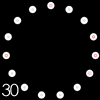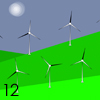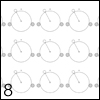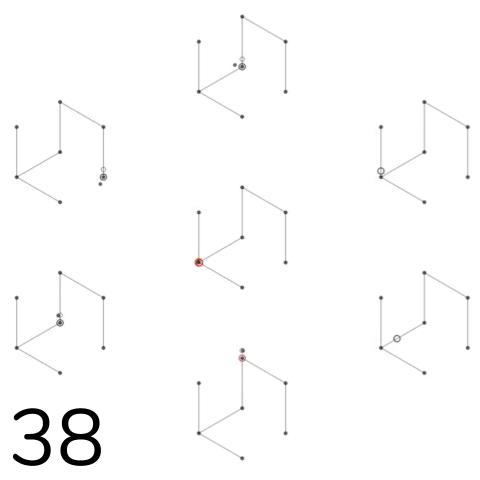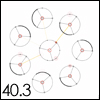Study no. 57
Performance Instructions
For 8 players.
Unlike many earlier Studies, there is some flexibility in how one might determine how to play this score, but certain elements are essential. Firstly, each player must be assigned to one of the 8 colors present in the score (indicated by the roaming squares and accompanying circles). Upon the arrival of one's respective square on a blank or staved square, some action should happen. The qualities of this action should be determined by whether or not the square beneath the colored square has a stave or not, the height of that square relative to the top/bottom of the score, the top and bottom of the "barbell" (stright line with two black circles on each end), and the vertical position of the player's colored circle in relation to all of these elements. Furthermore, it must be considered whether or not an event should occur during the square's movement.
The actions expected of each performer, in consideration of the possible events listed above, should be determined prior to performance, and must be consistent across the entire ensemble.
In general, the musical identity of all actions should be very consistent, and leave little room for interpretive missteps. Musical actions should also have an internal logic that is designed to signify little if anything beyond itself. In other words, assigning a particular melodic fragment to a staved square that is then performed with any typical musical flair or other performative cliches would detract from the ensemble, and potentially create a soloistic moment, which should be avoided at all costs. In other words, musical actions can have some sonic interest or intrigue associated with them, but must not produce the perception that this musical action or performer represents something more valuable than everything else.
Ryan Ross Smith, 2018
If you would like a copy of this animated score for performance, or have any questions about the animated notation used in this piece, feel free to get in touch! My contact information can be found here.
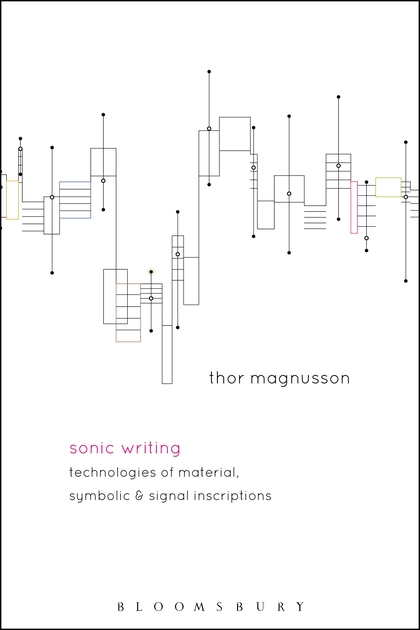
Study no. 57 was also used as the cover art for Thor Magnusson's wonderful book Sonic Writing: Technologies of Material, Symbolic, and Signal Inscriptions
